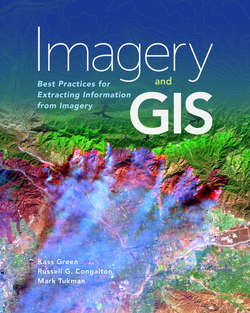Читать книгу Imagery and GIS - Kass Green - Страница 39
На сайте Литреса книга снята с продажи.
Sensor Summary
ОглавлениеWhile remote sensor components share similarities with our eyes and consumer cameras, they differ in the following fundamental ways:
Imaging surfaces must be absolutely flat to minimize any geometric distortion.
The energy sensed may be passively received by the sensor from another source (commonly the sun) or actively created by the sensor and then received back by the sensor.
Because most remotely sensed images are taken from high altitudes, their lenses are commonly designed for an infinite object distance; i.e., the lenses are fixed.
Shutter speeds are usually extremely fast because most platforms are moving at high speeds.
Remote sensor camera bodies must be able to withstand the extreme temperatures and vibrations encountered by the vehicle, boat, aircraft, or satellite platform. Additionally, for mapping purposes, the precise internal geometry of the sensor components within the body must be known as well as the location of the imaging surface when an image is collected so that the imagery can be accurately terrain corrected and georeferenced to the earth.
